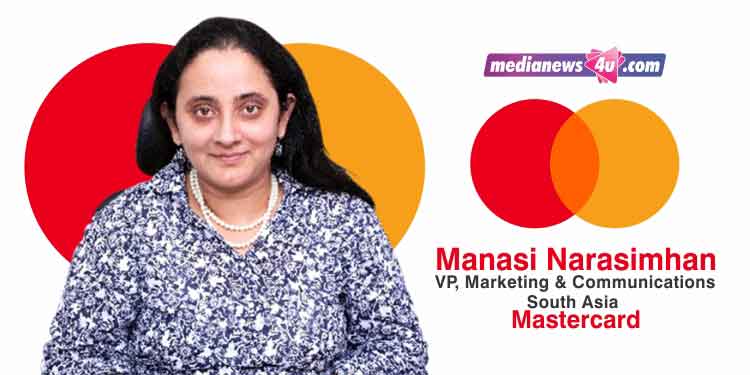Mastercard has been relentlessly working towards creating awareness about digital payments among small merchants and consumers. It is also working on ground to build trust amongst consumers towards contactless payments and educate them about the several benefits through various initiatives.
Amidst the festive season and Diwali being just around the corner, Mastercard has come up with several trust building campaigns to promote cashless digital payment system. Currently Mastercard is a running a campaign ‘Surprised Celebration’ with Hrithik Roshan and Shankar Mahadevan on their digital and social platforms. With the messaging of uninterrupted celebrations with your loved one, through City Mastercard cards and it being a one stop shop for day-to-day needs, Mastercard’s brand promise has always been to deliver Priceless experiences to its cardholders.
Mastercard has also partnered with RBL Bank to launch a new festive campaign, #UseBefikar, which rewards existing cardholders with exciting shopping offers and rewards. For this Mastercard collaborated with top celebrities to highlight the uninterrupted services among RBL Bank’s Mastercard Credit Card users and ensure a safer, secure, and reliable experience. This will foster the consumer’s growing desire for great deals, both online and offline
Manasi Narasimhan, VP, Marketing & Communications, South Asia, Mastercard in an exclusive chat with MediaNews4U speaks on the journey of Mastercard in India, surge of online payments and much more.
Mastercard’s journey in India in the recent past?
Since its inception, Mastercard has been relentlessly working towards creating awareness about digital payments among consumers. Throughout its journey, Mastercard has been committed towards the convenience of its cardholders by innovating choices, flexibility, confidence, and creating Priceless experiences for them. We are also committed towards the inclusion of MSMEs into the formal economy and are applying our network, knowledge, technology, and partnerships towards building a Digitally Inclusive Bharat. The MSMEs are a significant source of employment generation in India, especially in tier 2 and tier 3 regions with contribution of more than 40% in GDP. Despite their massive contribution, it is unfortunate that many of these MSMEs are still unbanked, under banked and outside the realm of the formal economy. The primary reason for this is lack of awareness and unavailability of the right infrastructure. To bridge the gap, Mastercard has deployed a three-pronged strategy. One, educating small merchants about the benefits of digital payments and supporting them to start their digital journey. Two, we partnered with fintech companies and banks for deploying low-cost, easy to use payments acceptance solutions. The new-age payments acceptance solutions co-created by Mastercard are extremely cost effective and handy, allowing merchants to accept payments in different form factors. Lastly, to build trust about safety of digital payments we have invested billions of dollars in world-class technology.
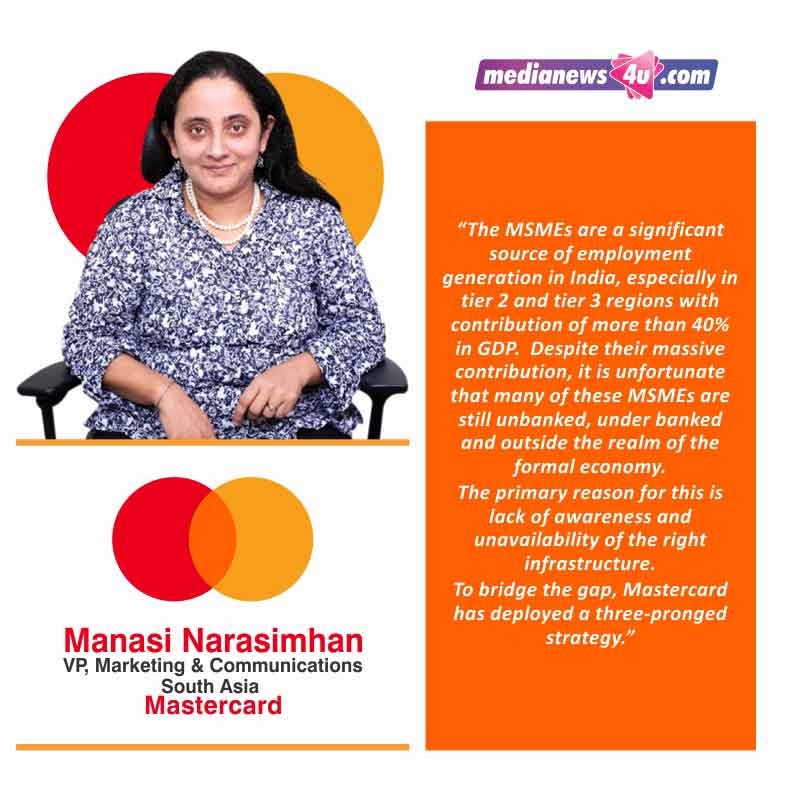
What are the initiatives you have for ensuring the credibility and authenticity of Mastercard users?
The biggest lesson for marketers is to have a human centric and empathetic approach towards their communication. Today, consumers can see through opportunistic campaigns that are tone deaf and only seek to sell. They can assess the authenticity of communication and a brand’s intent. Every action you take as a marketer could be good or detrimental to your brand. In such times, the only currency that a marketer should care about is consumers’ trust.
Furthermore, marketing communication needs to be tailored around ‘messaging-first’ instead of a ‘platform-first’ approach, as digital and physical mediums converge. For instance, our campaign #ThankYouVyapaariyo was led by M.S. Dhoni with the aim to grow awareness about digital payments, support on-boarding of merchants for digital commerce and later, to enable them to continue their business with safe, contactless payments amid the pandemic. Once we zeroed down on the messaging, a variety of digital, traditional, and on-ground platforms were utilized to reach out to our audience. Another such example is the inclusion of India into our flagship Priceless program. The ‘message’ here is that, despite so many travel documentaries, memoirs, and other information about India, there is much more that the country offers in terms of untold stories, history, food, people and culture and so on.
For example, we were running a campaign ‘Uninterrupted Celebration’ with Hrithik Roshan and Shankar Mahadevan this Diwali on our digital and social platforms. With the messaging of Uninterrupted celebrations by CITI Mastercard cards and this being a one stop shop for day-to-day needs, the campaign promoted Mastercard’s brand promise of always delivering Priceless experiences to cardholders. The 90 seconds music video integrated Mastercard’s sonic tune along with Shankar Mahadevan’s music, curating a sense of familiarity and abundance of user generated content on social media. The campaign turned out to be a creative and innovative marketing solution which directly struck a personal chord with the viewers through integration of influencers. It is clearly a one-of-its-kind campaign, which included an entire 360-degree integration across platforms like OTT, print, digital and OOH. This creative masterpiece is a fresh approach to weave a piece of the brand’s iconic identity into the pop culture conversation.
Today with the surge of digital payments and online shopping activities do you still feel that human touch is lost somewhere?
Digital payments allow consumers to make payments without cash for goods and services through cards, mobile phones or the internet. It presents several advantages, including cost and time savings, increased sales, and reduced transaction costs. Digital payment methods are often considered easy to transact, more convenient and provide customers the flexibility to make payments from anywhere and at any time. This is certainly a good alternative to traditional methods of payments.
Post demonetization, people gradually started embracing digital payments. They infuse humanity and personalization and can forge strong consumer connections, build trust, and drive growth. Owing to that, digital payments are at the forefront to revolutionize the financial services space by offering consumers a convenient and hassle-free digital experience.
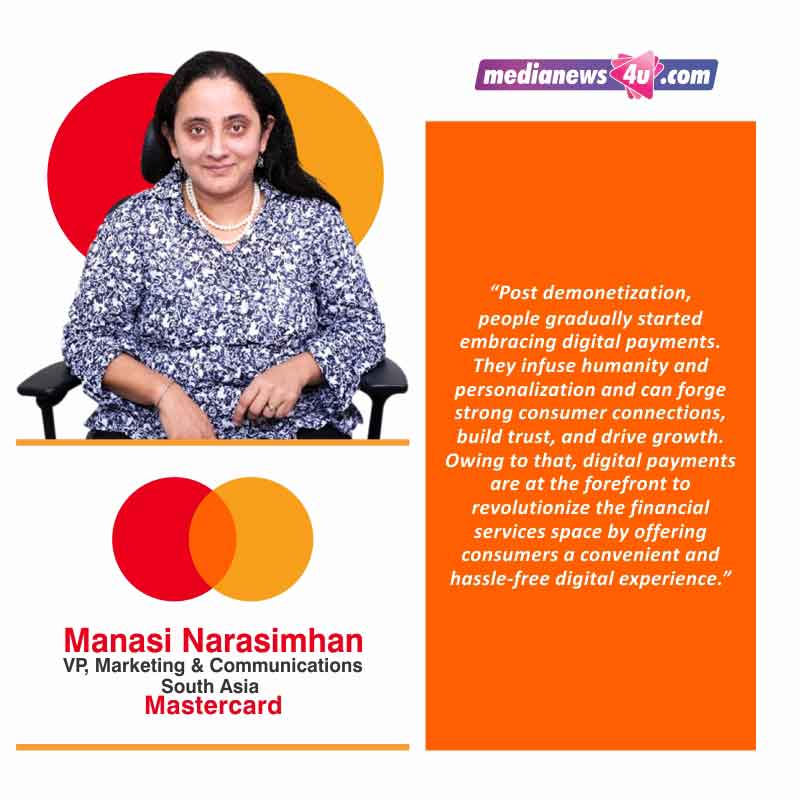
In order to do so, we are working on an effective marketing strategy which is not only anchored in selling but also hyper-focused on relationship building. To directly connect with the audience, Mastercard launched its sonic brand identity, a comprehensive sound architecture that signifies the latest advancement for the brand. We believed that effective sonic branding could help enhance brand attributes such as differentiation, image, identity, and emotional connectivity with consumers
In the past one and a half years the digital landscape has changed and growing in a very fast phase. Your thoughts?
Amidst the growing concerns about the spread of Covid-19, stores were closed, and social distancing has taken place. With this, digital payments in India are witnessing an exponential spike. Around the world, merchants and retailers worldwide have moved their businesses online. At the same time, consumers are also choosing to shop with businesses that offer contactless payments. In fact, according to a recent Mastercardsurvey , 58% of Indian respondents intend to increase their usage of contactless payments such as debit and credit cards, prepaid cards, and mobile wallets, which shows their comfort with the digital ecosystem. Not only have that, but 81% of Indian respondents believed that contactless payments are here to stay. This is a testament to the growth of the Fintech industry and only goes to show that digital payments have more potential to be unlocked in the future.
Hence, we believe that contactless commerce could become the norm for consumers as enforced behavioural change becomes an everyday habit. To cope up with this changing landscape, companies must convert the customer’s journey from the physical channel to end to end contactless operations. Post covid, most of the people prefer to buy online than risk themselves or their family by going to crowded places like a supermarket or any grocery store. B2C e-commerce has experienced a surge in traffic and orders for daily use products like groceries, bathroom essentials, personal care products and many other consumer items. It is evident that, the pandemic has changed the way people live, work, and transact.
Mastercard recently launched a campaign with your partner RBL called #UseBefikar, can you talk to us about this campaign?
As the nation geared up for the festive season, consumers wanted the most competitive deals and rewards to get the most out of their spending. According to a recent study, 87 percent of consumers were willing to spend more as they prioritize convenience over price. So, to promote credibility and trust among the cardholders RBL Bank and Mastercard recently announced the launch of a new festive campaign, #UseBefikar, which rewarded existing cardholders with exciting shopping offers and rewards.
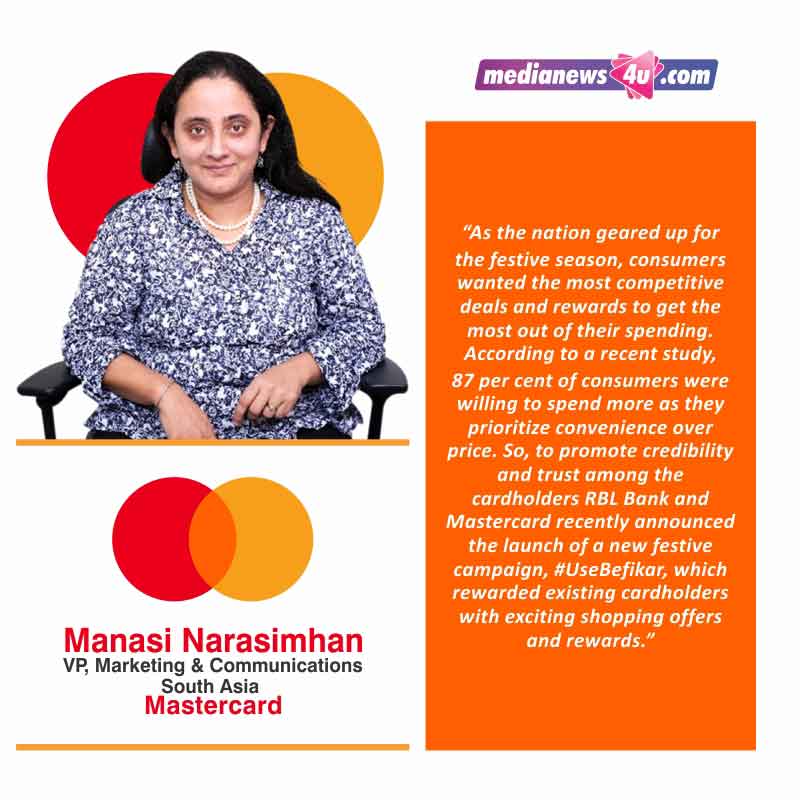
Backed by renowned personalities, the campaign was running through a video series that aimed to strike a chord with cardholders at the start of the festive season. The videos highlighted the card’s versatile offerings for every family member, focusing on categories such as health and fitness, e-commerce, online bill payments and food delivery. We believed that this collaboration would foster the consumer’s growing desire for great deals, both online and offline. Through #UseBefikarMastercard aimed to resonate with the audience at a personal level. The celebrities definitely brought a sense of credibility and authenticity with them, ensuring a wider audience reach. They also gave a soft nudge to try uninterrupted offerings backed by a safe and secure payments system, creating an aura of excitement around it.
Out of the box marketing initiatives to reach out to more consumers?
The pandemic forced people across the globe to cancel their plans as physical travel was temporarily put on hold. Owing to this, Mastercard launched ‘Priceless’, which is one of its flagship programs in India with the proposition of offering domestic and global travellers exclusive access to several unparalleled experiences in the country. The ‘Priceless India’ program is an extension of Mastercard’s Priceless Cities program that was launched to unlock several unique experiences in various cities across the globe, for the brand’s customers. South Asia has been a relatively new entrant for the program – having been launched last year for the first time and India is the recent addition. This unique experience is centred around India to put the country on the global tourism map once again. For this initiative, Mastercard had partnered with the world’s top travel researchers, historians, art curators and more to bring the choicest benefits to cardholders who place a premium on experiences, be it untold stories, history, food, people, culture and more.
Recently, with the distinctive Diwali campaign #YehMeriDiwali, Mastercard has gone an extra mile to change the way we think about Diwali. Through #KyukiKuchKhushiyanHaiPriceless, we tried to embed the true meaning of Diwali celebrations as quality moments cherished with loved ones.
In the digital world what are the trends you are seeing globally and in India in the new normal?
Confined in their homes, people highly relied on e-commerce for the purchase of groceries, health products and other essentials. Even now when the lockdown has been lifted, consumers prefer to shop online as they want to minimize social interaction. According to our recent Covid-19 consumer sentiment monitor, only 32% of people in India miss in person shopping experience showing a drastic digital shift in consumer buying patterns. E-commerce and digital payments were preferred even before the pandemic; however, where we are today in terms of number of transactions are largely attributed to the safety concerns that people have.
This has led to massive e-commerce sales, with big e-commerce players leveraging this boom by introducing festive and end-of-season sales. One of the important drivers of e-commerce is the adoption of a digital-first approach. Having experienced the ease and convenience of digital payments in the time of crisis, and the ease of getting goods delivered at their doorstep, consumers feel confident about ordering online and making digital payments. Individuals and businesses have turned to ecommerce for all their needs and more than 500 brands are riding the D2C wave in India today.
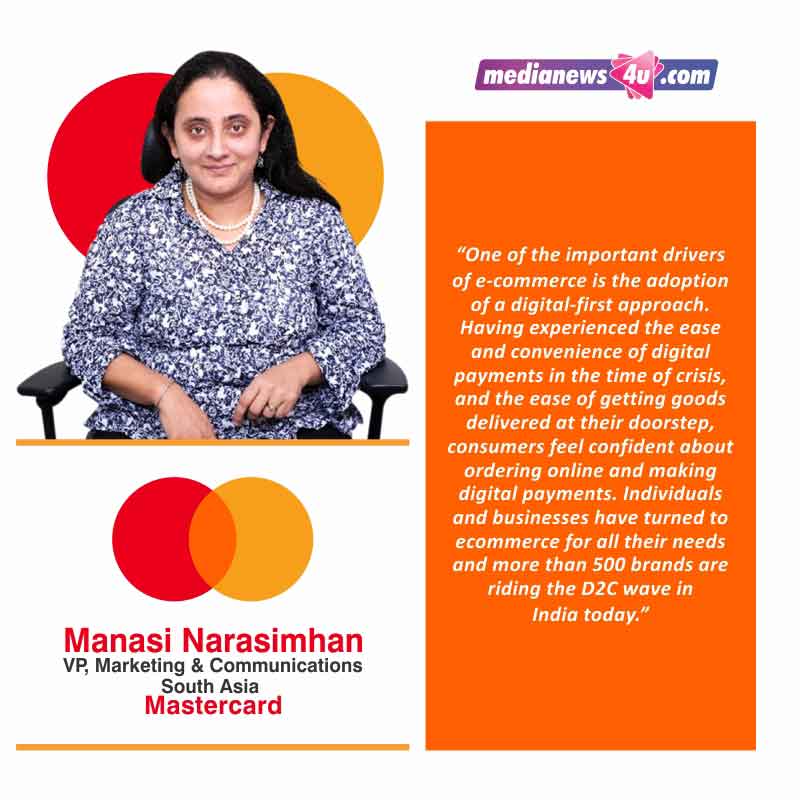
That’s why addressing this payment gap and going Omni channel is extremely important for brands willing to take the D2C route to expand their business in global markets. Merchants and retailers worldwide have moved their businesses online, embraced e-commerce and explored the potential of Omni channel commerce. A majority of retailers are meeting consumer’ needs for Omni channel payments, as are half of small businesses. According to recent Mastercard survey, 77% of APAC respondents like being able to shop at small businesses that now have an online presence. Digital payments would certainly provide a gateway for secure transactions which would further build trust in the minds of the customers.

